5,048 words ~ 16 min read
Beyond 1,000 users: A customer-obsessed business

How focusing on the customer (not the competition) brought us over 1 million new signups in a year
In February 2017, we launched a new product version.
We had spent nearly all of 2016 revamping a core feature and we were excited about what we’d built.
But shortly after the release, our design director found a discussion thread on Designer News.
The top commenter quoted the first two lines of our About page (which says the company was founded in 2006), then wrote:
“So how come [this particular competitor] is more popular?
I never heard of you guys.”
Ouch.
After 15 years in business, I’ve developed a fairly thick skin. I know how the internet works. Some people are kind, some are mean, and others are just blunt — like that top post.
Still, the comment bothered me.
Our company predates all the competition, and we have +10 million users.
I also know that we’re not exactly popular in the startup world.
Jotform is bootstrapped. We don’t hang with the cool kids. And chances are you’ll never see us on the top of TechCrunch, announcing our latest funding round.
But, if people thought the competition was better, could we change that perception?
Our competitors are more popular in the startup world, but did that mean we should follow their lead?
Because we launched in 2006, our users work in a diverse range of industries, including more “traditional” fields such as non-profits, law, finance, accounting, and big corporations.
If we indulged our FOMO and imitated the competition, our product might not work for those users. But, we operate in a hyper-competitive industry where even Google has stepped into the ring. That can be daunting.
While it was tempting to panic and chase the trends, we ultimately decided to stay in our lane.
We would take our time and innovate — ideally without alienating our customers in the process.
It worked.
Innovating on our own terms brought us over a million new signups throughout the last year.
Here’s what I’ve learned from listening to your customers instead of chasing the competition.
Listen closely, even when the data is hard to swallow
Criticism can be good for business. It can inspire you to stretch and innovate.
But once you come up with something new, you can’t just impose it on current users out of the blue (even if all the “cool kids” are doing it).
If you make sudden, un-requested changes, you risk losing customer trust and loyalty. That’s a big deal.
Instead of forcing change, it’s important to:
- Release new versions or major feature changes to a small test group.
- Establish a clear way to measure user reactions. This could be a number, a behavior, or another metric that shows how customers really feel about the change.
The team and I thought a lot about that discussion thread. After deciding not to mimic our rivals, we had a new mission:
To reinvent forms. We would re-invent Jotform.
We started with three hack weeks. These are five-day sprints where designers, developers and other product groups focus exclusively on a single idea or problem.
Our cross-functional product teams were told to unleash their creativity. To think big and broad and wild.
After a fourth hack week, we had a promising new design. That prototype eventually became Jotform Cards, which we released recently.
But first, we started testing. When people signed up for a new account, 50% received the new forms and 50% got the old design.
If these new users logged into their account or worked on forms within a month after signing up, we considered them an “active user.” That was our success criteria.
The results were terrible.
People who received the new card-style forms were 30% less likely to become active users.

We were disappointed. We tried changing the colors, the default background, and key parts of the form design. We tried everything. The results were still dismal.
We ran email surveys and gathered feedback from our site. Most people still preferred our traditional approach.
We talked about it and came up with a new testing strategy:
Choice can be more powerful than change
Apparently, showing 50% of our new users the new forms and the other 50% the old design didn’t work.
But instead of forcing change, what if we created one more user group and gave them the ability to choose?
So we decided to split our new users into three categories:
- A third would get the old forms,
- a third would get the new version,
- and another third would choose their form style.
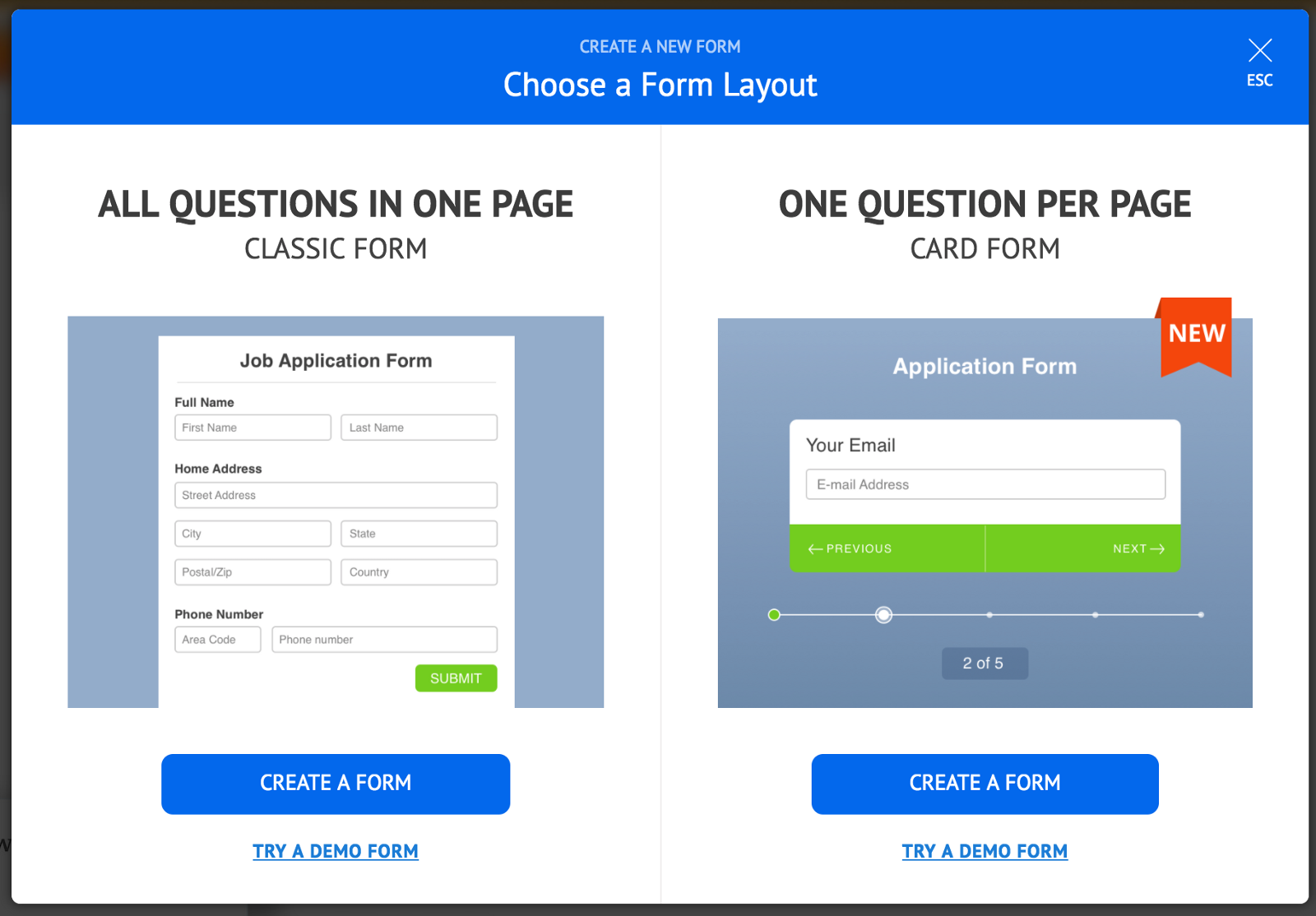
We ran this test for a month and expected the old design to win again.
Once again, we were unprepared for the results.
People who could choose their form style were 20% more likely to become active users.
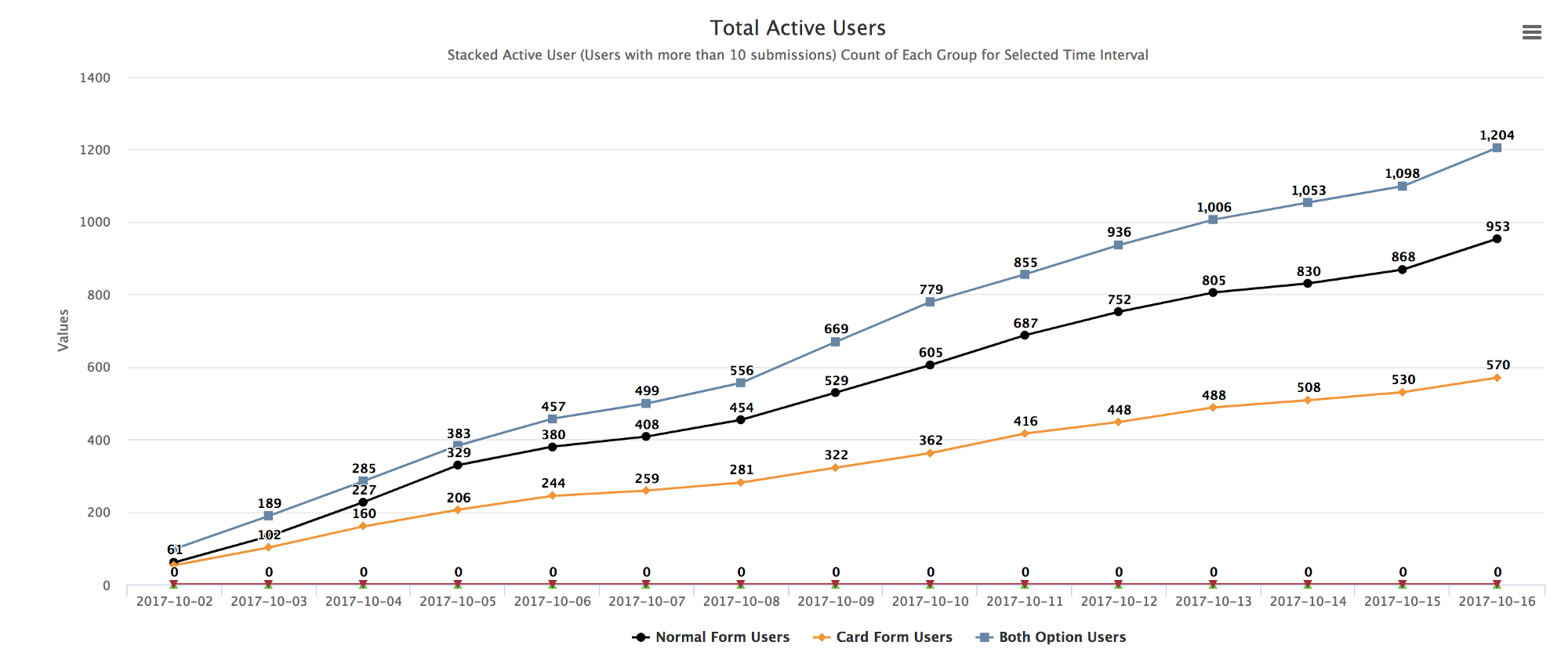
We dug into the data. A large percentage wanted our traditional forms, a smaller group wanted the new ones, and most people were even happier to have the choice.
It was a big lesson for us — and one that I’ve had to re-learn several times in 15 years of running this company:
Don’t assume you know what customers want.
You have to look at the data.
As I mentioned earlier, many of our customers work in fields like law, non-profit, education, finance, and accounting — and these users overwhelmingly preferred the classic design.
If we’d simply released our new design and forced it on users, it would have been a huge disaster. We would have lost customers and maybe even damaged our brand.
We realized that flexibility matters. Our users need the ability to choose.
Now, we have some customers who use both the classic and the new form styles, depending on what they’re working on. That makes the product better for them.
And we wouldn’t have realized this if we had blatantly copied our competitor’s one-question-at-a-time style.
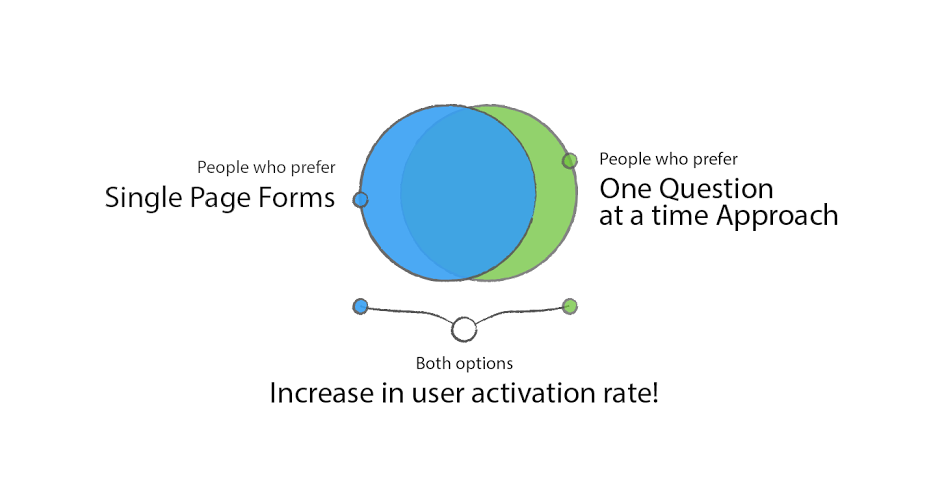
Customer support = essential information gathering
Focusing on the customer, not the competition, also means taking a closer look at how you run your customer support division.
Many companies think support teams exist solely to resolve tickets and answer tedious questions.
Instead, customer support is a critical function, because it lives at the centre of product innovation.
Your support team should be empowered to speak up, contribute to the innovation pipeline, and take the initiative to investigate customer issues, rather than robotically resolving one ticket after another.
Lots of people have criticized Slack, for example, because they have five times more support reps than salespeople.

But it took Slack just over a year to move from launch to a $1 billion valuation. It’s now bigger than comparable startups with massive sales teams.
We’ve taken a similar approach. Jotform has no sales reps, but we have 35 customer support staff who work all over the world. They’re available 24/7, 365 days a year, and the average response time is 1.5 hours.
This is what it means to serve the customer, instead of chasing the competition.
Here’s another example. Technically advanced users often ask to edit our CSS. We’ve empowered our support team to help improve the product, so they began to independently investigate these requests.
We learned which customizations were helpful and updated the product accordingly. Without the support team’s insights, we would have launched a big and unnecessarily complicated CSS editor.
When you empower your customer support team, there’s no limit to what you can learn from your customers. Together you can make the product so much better.
Healthy competition is awesome — and it keeps you on your toes
A year after I read that comment thread, here’s what we know: most people don’t actually prefer our competitors or their product style. We know this because we have the data to support it.
It’s true that some people haven’t heard of us, but we had almost a million new signups in 2017 alone, and our growth shows no signs of slowing four years after today. Our customer retention rate is strong.
There are certainly haters and people who don’t like our approach, and that’s fine. We’ve learned how to serve our loyal users.
And for those who prize a fresh, design-savvy style, now we have a solution for them. We’re trying. We’re listening and learning — all the time.
Most importantly, our competition motivates us to be better. They inspire our team to work harder. Without opposing players and dissenting voices, we might not have stretched ourselves to innovate.
The bottom line? There’s room for everyone to raise the bar in this online world. As 2021 ramps up, here’s something else I know:
Strong competitors make you better.
Get inspired by what they’re doing, and then get to work.
How to turn haters into fans and fans into brand ambassadors
97%.
That’s how many customers say online reviews factor into their buying decisions.
90% read online reviews before visiting a business.
88% trust these reviews to help them decide on their purchase. And
84% trust online reviews just as much as a personal recommendation.
Don’t have any reviews? 8% of customers don’t care.
The other 92%? They care quite a lot.
....I could go on. After all, I’m the first person to scour a restaurant’s Tripadvisor before booking a table, or scroll through user comments before investing in a new gadget. Aren’t we all?
These statistics are unsurprising today, when a company’s online reputation can be its greatest advantage — or its biggest liability. Even Apple aren’t immune to the power of the people.
Companies can try and convince users of the value of their product; but nothing carries as much weight as the words of people who aren’t paid to say them. Consumers trust other consumers more than they will ever trust us.
That’s why a word-of-mouth endorsement is the best form of marketing; but online reviews come a close second.
When we start a business, something that we’ve poured our heart and soul into is on the line for praise and criticism. Customer feedback can be wonderful. And it can be painful. Either way, it matters.
Good reviews are good news, naturally.
But the story doesn’t end there.
Each and every review is an opportunity for growth.
Yep, even the most awful ones.
They reflect what we do right, what we get wrong, and what our blind spots are.
And reviews are not the last word.
No matter how awesome our product, how thoughtful our customer service team is, we can never achieve a completely clean slate with no negative feedback; in fact, it would actually be a little weird if we did.
We can’t control what people say about us, and we certainly shouldn’t delete bad reviews when they inevitably appear. What we can control is our response.
In fact, how we react to a review matters just as much as the review itself.
Because our response is a snapshot of something much bigger: our values, our service, our personality, our brand.
A snapshot visible to millions of people.
So, what kind of impression do we want to make?
First things first
Let’s face it: most responses to online reviews are pretty generic. That’s why the way in which we reply is a chance for us to stand out, and lend a human element to a static online interaction.
A warm, thoughtful response can have the same impact as a smile and a one-to-one conversation.
Of course, our level of formality will depend on the review. And of course, there isn’t a go-to method that works for everyone.
That being said, all responses will benefit from these pointers:
Name-calling
Addressing people by their name (whether it’s ‘Katie’ or ‘ilovewine2001’) and signing off with your own will strengthen the connection and make customers feel valued. In the case of a serious complaint, offer a way of continuing the conversation in private.
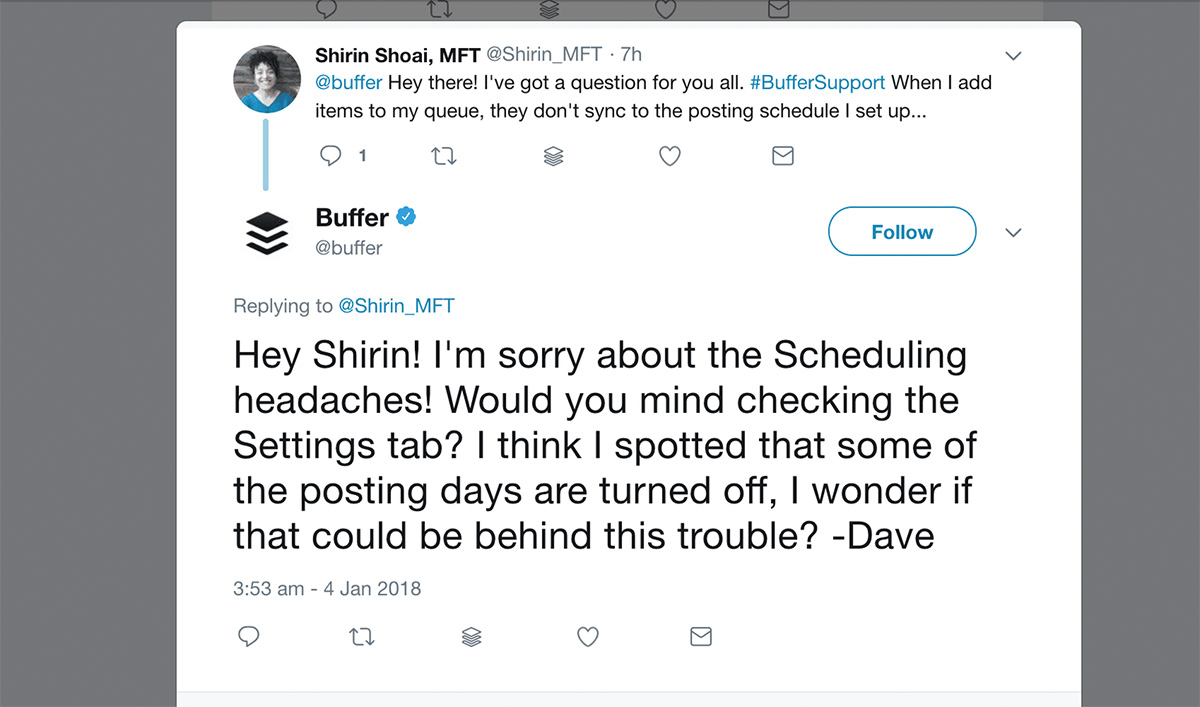
Thank you’s
Here’s something obvious (and yet often overlooked): thanking our customer for taking the time to share their thoughts. Full stop.
Keep it simple
Jargon, lofty mannerisms, convoluted sentences? Resist. They build barriers, and it’s hard to get a point across in overly-complex territory. It pays off to keep word choice simple and sentences short. Ask yourself: is this how I would speak to someone in real life?
Be specific
Repetition is boring. Automated replies are super-boring. Both are kind of offensive in this context. Copying and pasting the same reply says “this review is so unimportant to us that we couldn’t even be bothered to give you an individual response”.
Other things that will make your customer’s eyes glaze over: broad statements, abstractions, generalisations. Picking up on specifics shows a customer that they’ve been heard.
God is in the detail. Good customer service is too.
Bad reviews aren’t as bad as you think
Ouch. No matter who it comes from, negative feedback hurts. It’s hard not to take it personally.
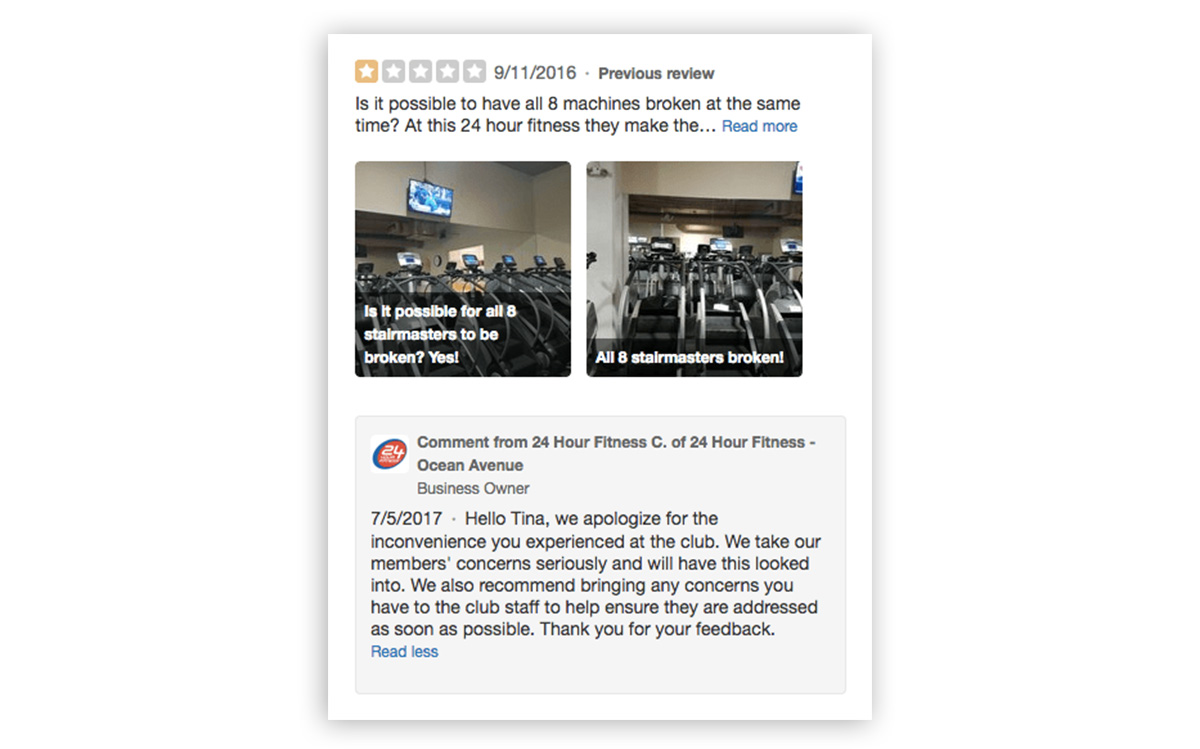
Behind the keyboard, people are often more ruthless than they would be in real life.
That’s why negative online reviews are a triple whammy. They sting, they’re harsh — and they’re public.
Who wouldn’t want to defend themselves in this kind of situation? Many companies do.
Hint: it doesn’t work.
Being defensive will not just alienate the customer who wrote the critical review, but also all others reading it.
So where is the opportunity?
It’s a two-way conversation, remember. Your reply can change the customer’s mind — and everyone else’s in the process...
Changing minds
Make it genuine and gracious
“Fine. I’m ‘sorry’”, drawls the moody teenager, “But I want you to say sorry and MEAN IT,” replies the despairing parent.
That parent has a point. ‘We’re sorry for the inconvenience’ or ‘we apologize for the issue you had’ are the least sorry-sounding apologies ever. They say:
“We’re sorry that YOU had a problem (a problem for which we accept zero accountability, by the way) ”. They are the verbal equivalent of sticking your head in the sand. Not a good strategy. The alternative?
Take full responsibility. Let your apology reflect that you a) accept the issue b) will resolve it and c) will ensure it doesn’t happen again.
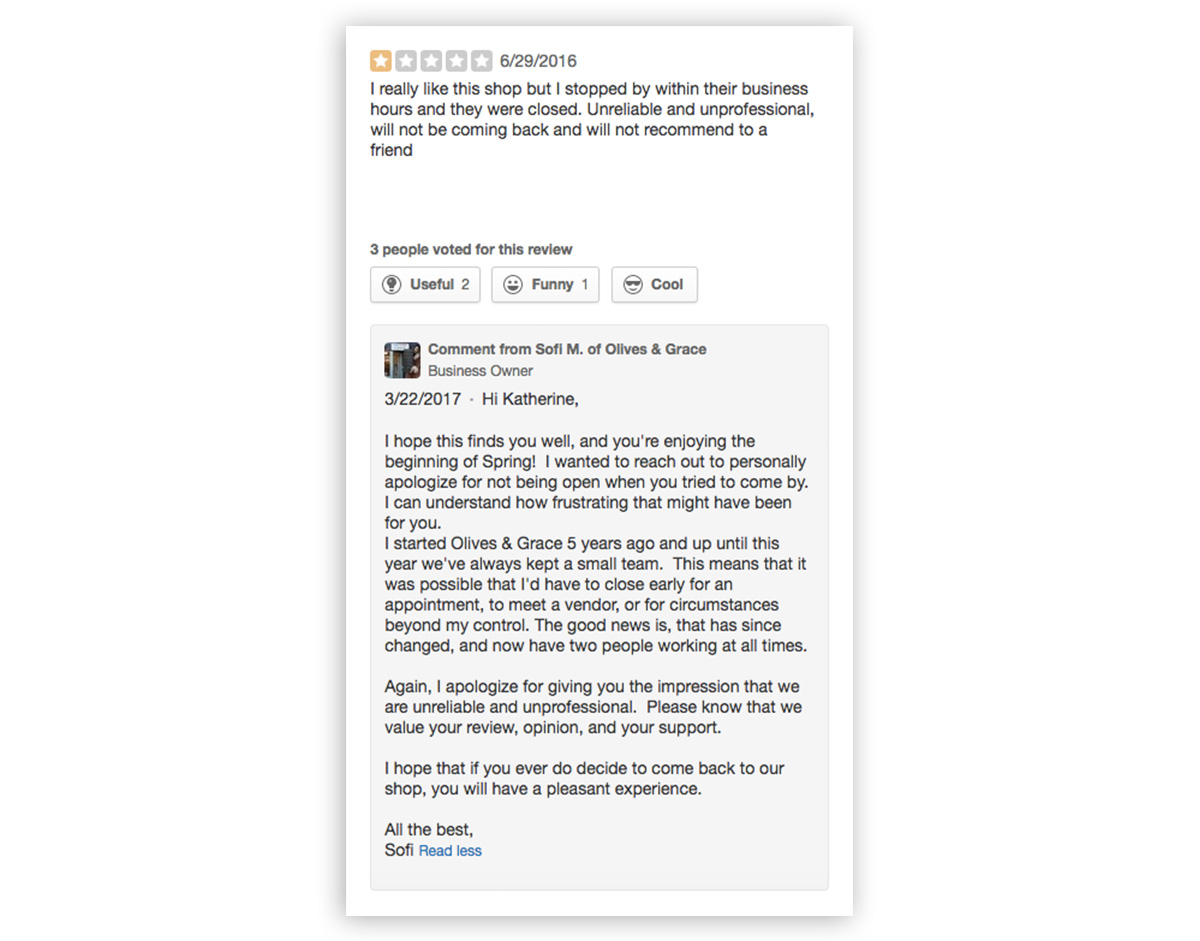
A customer writing a negative review feels aggrieved and may sound adversarial. We want to change this. A reply that is genuinely warm and considerate will take the wind out of the angry customer’s sails.
Don’t leave it to the intern
Fetching coffees, fact-checking… there are plenty of tasks that should be passed down the ranks. Replying to negative reviews isn’t one of them.
An apology will carry more weight when it comes from a higher echelon. The involvement of a senior staff member shows that we take an issue seriously.
Many negative reviews arise from confusion on the part of the customer rather than a mistake on the part of the company. No need to point the finger, though; just politely clarify the situation, and offer a solution.
Sometimes resolving the issue means offering something extra: a discount, a freebie, an invitation to come in and chat. This kind of response creates loyalty.
Or, the magic words: “How can we make it up to you?” Putting the ball in the dissatisfied customer’s court gives them the chance to become constructive.
Respond quickly — but not too quickly
This is a tricky one. Take too long to respond and the unhappy customer (plus anyone else who’s reading) may think we are trying to sweep the bad review under the carpet by ignoring them.
But if we are too hasty, our spur-of-the-moment response can be overly emotional — or factually incomplete.
So, before you respond, hit the pause button. Make sure you’ve got the full picture. Jot down your thoughts. This way, you can be sure your reply is accurate, considered and helpful to everyone involved.
Plus, bad reviews are good for business
Bad reviews...
- manage expectations, giving customers a realistic picture of what they can expect from our product.
- prove our positive reviews are real. If a business has only good reviews, something’s off...
- help us improve. Customers are telling us how to refine our product and communicate with them better.
- provide free business insights. Companies spend $1000s on market research — but this criticism costs nothing.
- equal more conversions. When browsing online, most customers actively seek out negative reviews over positive ones.
Good reviews need great responses
Most companies understand the need to react to negative reviews, if only to fight fires and limit damage. But many will neglect responding to positive reviews. These customers are already on our side, so why bother? Here’s why: you could turn fans into brand ambassadors.
Thanking customers who already love our business is a win-win tactic. They feel appreciated, which will strengthen their loyalty. We just get a free referral, so why not express our appreciation?
Creating superfans
A few suggestions.
- MATCH their tone of voice. If their style is informal, make yours relaxed too. If they are brisk, keep your reply succinct.
- INVEST time in replying to the longest, most enthusiastic reviews.
- GIVE inside knowledge. If you remember the interaction, mention the details.
- SHARE a personalized sign-off.
More is more
If someone can be bothered to write something awesome about us online, we can be pretty sure they will be saying nice things about us to their friends, too. And nothing we say about our brand is going to carry as much weight as what someone non-affiliated says for free.
Because great reviews = effective, free advertising. With so much noise online, reviews from real people tend to be much more warmly received than generic marketing. We can leverage the power of our best reviews by cross-promoting them or integrating them with our social media platforms. This is a powerful way to re-engage users and increase social conversion rates.
Google pulls data from external online review sites to create its search results; the more positive reviews we have over as many platforms as possible, the more effective our rankings, organic traffic and ads will be.
So, it’s not just about having great reviews — it’s about having lots of great reviews.
You can set up a personalised review form in a couple of minutes here. No fuss or coding required.
How to get the review engine whirring
SAY PLEASE. 70% of people will follow through with a review when asked. You can solicit a review in an email following a transaction, in a subtle pop-up, as part of a remarketing campaign, or in person. You can quickly add a feedback button to your site using Jotform’s free builder to make collecting targeted customer feedback quick and easy. Make sure the request is as unobtrusive as possible.
MAKE IT EASY. The harder it is to leave a review, the less likely people are to do it. With every extra step you add to the process, someone will decide they can’t be bothered to complete it. Having an option of simply clicking a star-rating and posting is a great place to start. Users should be encouraged, but not forced, to leave written feedback. If you have a review section on your website, make the process straightforward and the review button clearly visible. Oh, and make the process mobile-friendly, so that users can write reviews on the go.
SAY THANKS. A review is a favour. Many businesses offer incentives to encourage reviewing, reward loyal customers and drive growth. These take many forms, from a simple promo code to the chance to win a prize in exchange for a review.
How to develop a customer retention strategy

If you invest in growth before you have retention, you are renting users, not acquiring them.
Tarun Mitra
The business-customer relationship is often compared to a real relationship, and it’s never more relevant than in the case of customer retention.
Viewing customers as separate entities encourages short-term decision-making.
100 people have signed up. Next!
But here’s the thing: the customer isn’t truly ‘acquired’ unless they’re in it for the long run. If not, they aren’t really our customers; they’re just strangers passing through.
Once we’ve ‘acquired’ a customer, we need to continue to ‘acquire’ them throughout their customer journey.
In this instance, ‘acquire’ stands for ‘impress them, delight them, show them they’re valued’. We need to keep looking for ways to do more for them than anyone else is doing.
Failing to prioritize customer retention is like trying to fill a bath without the plug in. Yes, you can keep the water running, but the bath won’t ever be full: you need to find the plug.
Acquiring new customers is expensive. Keeping existing ones isn’t.
In fact, a much-cited study by Harvard Business School found that it’s 5x — 25x more expensive to acquire a new customer than it is to retain an existing one.
Returning customers = return on investment.
A 5% increase in customer retention can increase company revenue by 25%-95%.
That’s because retained customers tend to be the happy, loyal ones that drive higher life-time value. The ones who understand the value of our product. The ones who refer us to their family and friends. The ones who spend more, more often.
But in the case of many startups — when time is scarce, and resources are tight — the need to develop and implement a customer retention strategy can plummet to the bottom of the to-do list.
And when customers aren’t sticking around (and when we don’t know why) it has a domino effect on our finances and business.
Ready to develop a retention strategy?
Before you begin, it’s helpful to know where you currently stand, retention-wise.
That’s where Customer Retention Rate (CRR) comes in.
CRR is the percentage of customers who stay vs. the number of customers who leave. It is, simply put, the rate at which we keep our customers.
To calculate your CRR, you’ll need to define a period over which you will measure; this could be monthly, quarterly or annually. Then, work out the value of the following:
| 1. | Number of customers (S) at the start of a period |
| 2. | Number of new customers (N) acquired during that period |
| 3. | Number of customers (E) at the end of that period |
Once you’ve got those figures, you plug them into this little formula:
Customer Retention Rate = ((E-N)/S) x 100
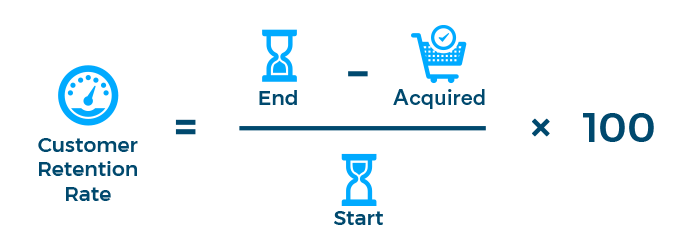
Here’s an example:
We start the month with 100 customers. At the end of the month, we have 105. We have lost 15 customers and acquired 20.
((105–20)/100)) X 100 = 85%
So, 85% of our customers are continuing to use our service, giving us a CRR of 85%.
CRR is a great place to start. If we want to dig deeper into the matter, there are a couple of other metrics worth looking at.
Cohort analysis
A cohort analysis is a set of behavioral analytics that takes user data and breaks it down into groups.
It can be used to measure user retention over a period of time, helping us to understand whether retention is actually improving or just appearing to because of growth.
Rather than looking at users as one unit, it breaks them into related groups.
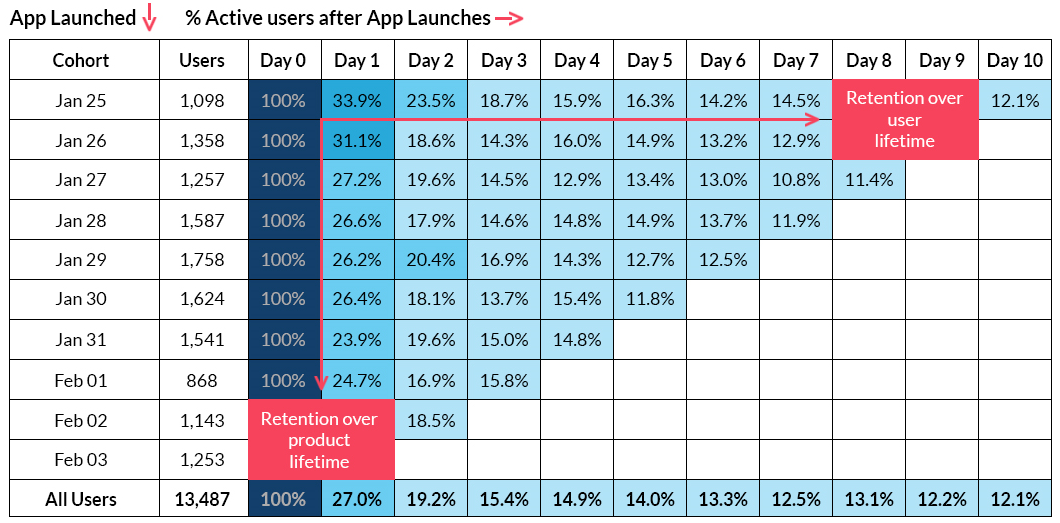
The dreaded churn
The arch nemesis of retention: churn. It’s worrying when your stomach does a lot of churning, and it’s even worse when your customers do.
Churn happens when customers leave.
It is the detractor to your CRR, the de-accelerator to your growth, the yin and yang of startups: 50% churn = 50% retention, 30% churn = 70% retention, and so on.
Similarly to CRR, churn rate needs to be calculated over a specific period.
Churn rate = the number of customers you lost over the period ÷ the number you had at the start of the period.
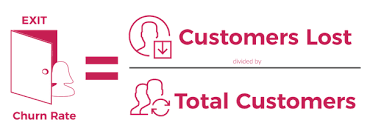
Pretty straightforward. However, in the case of many subscription businesses, not all customers — and therefore losses — are created equal.
If you lose a free plan customer, that sucks. If you lose a customer who’s paying $200 per month, that sucks more.
With that in mind, it’s handy to consider revenue churn rate, too.
Revenue churn rate = revenue lost over the period ÷ revenue at the start of the period.

‘We get it,’ you’re probably thinking. ‘Retention is good, churn is bad’.
Yes. So what we need to know is:
What’s making people stay, and what’s making them leave?
To stop users leaving, we need to know why they’re leaving us.
Luckily, there are plenty of ways to find out.
1. Start by asking: Conduct an NPS or CSAT survey
In one of my recent guides, I explained all the key metrics to measure customer happiness and highlighted Net Promoter Score (NPS) & Customer Satisfaction (CSAT) as the two metrics that are widely used by founders.
Those customer metrics help you to find out who’s scoring low, and why.
- You can set up an NPS form using a ready-to-use NPS template or build it from scratch on a free form builder.
- To measure CSAT, you can get started with a simple template, or focus on measuring multiple touchpoints using a more complex template as well.
2. Pinpoint the problem
Bugs, lack of information, incorrect billing, missing features…? All valid churn-triggers.
Make note of customer feedback to work out the most common problem(s). Then you can stagger your customer team’s efforts accordingly.
It’s important to make it easy for users to report issues. You can add a simple feedback button on your website or set up a customer support form here.
3. Analyze
Look into periods of user activity vs. inactivity, changes in plans, cancellations… It’s useful to visualize these interactions to highlight comparisons and context more effectively.
4. Test the waters
Organise a test with groups of customers who haven’t used your product before, and evaluate their responses.
5. Conduct an inside job
Often our most surprising customer insights emerge closest to home. It’s not just the customer support team who might have ideas on why people aren’t sticking around. Schedule a regular internal feedback session with all staff to understand if there are any blind spots you might be missing.
6. Have a reality check
One of the biggest drivers of customer dissatisfaction is disappointment caused by unmet expectations. Evaluate your product/service/insert where relevant: are you over-promising and under-delivering anywhere?
And remember….
The main and most important reason customers leave is because of ‘perceived indifference’.

Timing is key
Unless something has gone horribly wrong, most customers won’t make a snap decision to leave a company.
Usually, they stop using the product over time: once a day, to once a week, to once a month, to never. Then, the account will probably remain active for a while without any activity.
Six months later, the customer will receive a marketing email and remember to cancel their account. Boom! Churn alert. Cue lots of companies sending ‘Please, don’t leave us’ emails to try and change the customer’s mind.

By then it’s too late: the decision was made months ago. The customer has probably already signed up for a different service, too. No dice.
It’s important to try and address churn as early on in the process as possible. This means analyzing drops in activity sooner rather than later, and trying to re-engage customers at the first sign of cracks showing.
What’s next?
So, you’ve analysed. You’ve asked. You’ve listened. Now it’s time to come up with a strategy to increase retention and reduce churn.
As I outlined before, the best way to engage customers is through genuine conversation.
Here are some tips to get you started.
1. Segment carefully, customise accordingly
Last week’s subscriber not choosing to upgrade is going to require a different retention tactic than a three-year veteran who wants to leave. Avoid the cliche’ ‘we miss you/how could you leave us?’ guilt-trip.
The more personalized a user’s experience is, the better. Using a CRM tool is helpful to store user information notes from meetings and phone calls, ongoing issues, personal preferences of the customers, etc.
2. Deliver EXTREME value
Added value is one of the most powerful ways to boost customer retention.
- Launching a side project is a great way to give something valuable away for free in order to sell something related. It helps you to re-engage users by offering extreme value in one place — with no extra effort on their part.
- Sharing knowledge for free shows your users that you care. You don’t need to be a teacher, you just need good ideas. Providing educational material via your blog, knowledge centre, webinars etc., will improve the customer’s experience and reduce issue tickets.
- Creating a customer loyalty program will encourage users to stick with you over competitors. Reward them with points, offers, incentives — whatever suits you. People love feeling like they’re part of a club.
3. Set expectations — if you can meet them.

Disappointment happens when expectations exceed reality. It can be tempting to promise you will address issues straight away, but if you can’t meet these expectations, it’s better to say nothing at all than to let people down.
4. Always be launching
Customers stop using a product because they no longer see any value in it for them. They need a reason to stay. By offering customers who are slipping away a glimpse of exciting new releases — instead of just begging them not leave — you can entice them back in without the desperate undertone.
5. Get visual
Screenshots or diagrams of new features often have far more impact than plain paragraphs of text. An overload of content can suffocate your message, too, so make campaigns simple and slick.
Incorporating gamification into your offering is another tactic that pays off; you can encourage users to complete tasks and actions by adding a fun or competitive element.
We’ve jumped on the bandwagon at Jotform with our interactive Cards, a super-responsive update on static forms that feature micro-animations and motivational gamification effects.
6. Offer 24/7 support
Today’s customers expect immediacy. Making them wait around for a response will have them running for the hills. You can ensure your users get a quick response by setting up a live chat using a tool like Intercom.
7. Communicate results
Customers are more likely to stay with your company if they are aware of the results and ROI you deliver. If you can regularly communicate the payoff of your product, users won’t forget its value.

8. Use reciprocity
Acts of kindness make people want to repay them: that’s why reciprocity creates retention. Surprise emails, personalized thank you notes, unexpected incentives — small touches like these can have a big impact.
9. Leverage momentum
When your product is undergoing exciting changes, people in your company will know about it, but your customers might not. Keep your customers updated on improvements, new features and updates, and demonstrate new ways they can use your product and get added value from it.
Don’t forget
Especially in the early days of a startup, there will be customers for who your product just isn’t the right fit — and that’s perfectly normal. It doesn’t mean anything needs to be ‘fixed’.
When a customer does decide to leave, remember the relationship metaphor. Don’t fight back; set them free, and try to stay friends (so no pushy follow-up emails or calls).
These tactics shouldn’t be confused with shortcuts. A personal relationship can’t be built overnight, and business-to-customer relationships are no different.
At the end of the day, it’s our product and service that will be the biggest long-term drivers of loyalty. And they can’t be hacked.